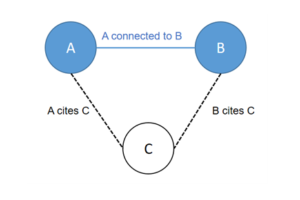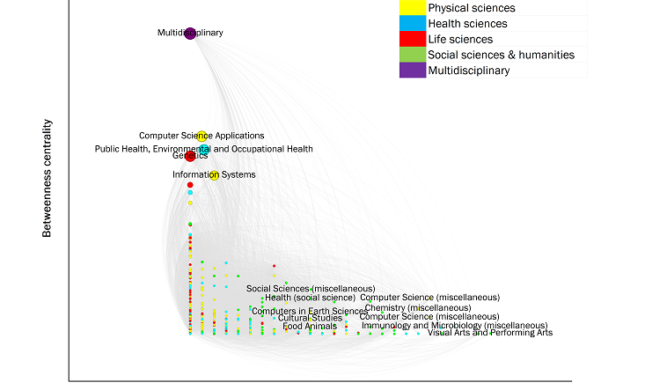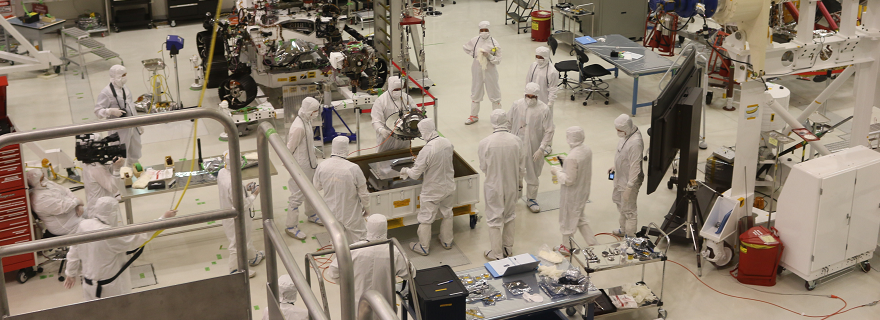Industry involved in research: The case of Latin America and the Caribbean
Collaborations between industry and research institutions are a common phenomenon in science. But what does the situation look like in Latin America and the Caribbean? In a recent study, our author took a closer look and identified central as well as less prominent research areas.
Industry-University partnership is now part of the governance canon of higher education. However, the multiple forms this type of partnership can adopt are not so clear for every junior-faculty, administrators, and from there to the top-management in the higher education sector. In addition, the landscape of Industry-University partnerships can get fuzzy — not to mention difficult — given the scarce resources dedicated to research and development in middle and low-income countries.
Take Latin America and the Caribbean as an example. There are no Latin-American companies listed in Clarivate's Top-100 Global Innovators. In addition, as of 2022 there are only two companies ranked in the SCImago Institutions Ranking, which assesses institutions worldwide in terms of research performance, innovation output, and societal impact. Those companies were Petrobras and Estacio Participacoes AS. Petrobras is one of the largest companies in the petroleum industry in the region, while Estacio Participacoes focuses on private educational services in Brazil.
Given the absence of Latin-American private organizations in the global innovation sphere, it is both relevant and urgent to identify highly strategic research fields in regions with restricted financial resources and underdeveloped industry ecosystems. For instance, in 2019 the average research and development expenditure in the region was a mere 0.7%. Also, it is of high value to map research fields still-to-be-explored-and-exploited via Industry-University partnerships.
Mapping the research-fronts of industry in Latin America and the Caribbean
In a study published in the Journal of Information Science, I identified highly strategic research-fronts for both industry and research intensive institutions, universities among them, in Latin America and the Caribbean. I applied a technique used to establish interconnections and clustering between knowledge domains. This technique is called bibliographic coupling.
The bibliographic coupling approach enables us to examine the underlying structure of the knowledge required for researchers to produce new knowledge. This technique is quite versatile. It can process highly multidisciplinary amounts of research documents, such as research on the Sustainable Development Goals or the complete set of articles published in the journal Nature in 150 years of history.
The approach for coupling two documents is straightforward. See the figure below this paragraph. Let's suppose that I'm writing an article on biotechnology (A, in Figure 1), and you, the reader, are writing an article on bioeconomy (B, in Figure 1). We do not know each other. However, we found an interesting article or any other type of scholarly communication such as a book chapter, policy paper, and the like, on the bioeconomy of biotech (C, in Figure 1). Now, we read and assess that scholarly communication, and decide to include it in our own study. We cite it and by that common citation our documents are now connected. The same applies to the fields of research of publication A and B: Because of A and B being connected, biotechnology and bioeconomy now share a link as well.
In this first step, the bibliographic coupling detects the shared references between research articles to interconnect them. Then, in a second step, it is also feasible to interconnect the research field of the journals in which those articles were published, thereby assembling a network of research fields based on the research articles coupled.

I applied this process to a sample of 13,000+ research articles indexed in the bibliographic database Scopus. The articles sourced had to be coauthored by at least one author affiliated with an institution in Latin America and the Caribbean — either public or private —, and the same author or another coauthor affiliated with a private organization in any other country.
As I previously mentioned, the bibliographic coupling enables us to interconnect the research articles produced with industry collaboration and the underlying structure of the knowledge required for their development. Once these articles and the academic journals in which they were published were identified, I use the research fields' classification of the journals to assemble a research field network as follows.
Each academic journal indexed in Scopus receives a classification to a single or multiple research field based on the All Science Journal Classification system. There are over 330 research fields, categorized into five areas, namely physical sciences, life sciences, health sciences, social sciences & humanities, and multidisciplinary. In consequence, if two articles connected via bibliographic coupling were published in a journal with two classifications such as biotechnology and bioengineering, and a second journal with a single classification in molecular medicine, the research field network based on these two journals is composed by three interconnected fields: biotechnology, bioengineering, and molecular medicine.
Also, I calculated betweenness centrality, an indicator for each research field that unveils its strategic position within the network. Figure 2 shows the network layout with the research-fields with high strategic position, proportional to the size of the nodes. Also, it shows the time of the first publication of a given research-field.


Physical science, the most active. Multidisciplinary, the most strategic
Results showed that multiple research-fields from different research areas were active in industry-research collaborations (further on called industry research fronts). Physical science had the most active role. The least active role went to social sciences and humanities.
The research area of physical science with fields such as computer science applications, information systems, electrical & electronic engineering, energy engineering and power technology took about ~38% of the total nodes of the network. Health sciences made up 23% of the nodes. In this area, we can find research-fields such as public health, environmental and occupational health, or general medicine. For the case of life sciences, an area with ~19% of the nodes, we can find research-fields such as genetics, pharmacology, or agronomy and crop science. Finally, for social sciences and humanities, with ~18% of the fields, we can find fields such as strategy and management, geography, planning and development, or economics and econometrics.
Despite having just one node in the network, the area of multidisciplinary research had the highest betweenness centrality. Multidisciplinary research was mostly published in scientific journals such as PLoS ONE. According to this journal, they accept: "over two hundred subject areas across science, engineering, medicine, and the related social sciences and humanities." Therefore, it is quite difficult to dimension multidisciplinary research as a single research front, despite its highly strategic position in the research fronts network. More so, to outline specific recommendations and a plausible course of action to follow through the Industry-University partnership.
Uncharted research-fronts
Through recognizing research fronts, I could determine which research-fields had yet to be explored or exploited by industry-institutions. Most of these research-fields were from health sciences, such as emergency medicine, care planning, or optometry, followed by fields in the social sciences and humanities, such demography or life-span and life-course studies.
Here lie plausible interconnections between the aforementioned uncharted fields. For instance, the number of US citizens aged over 65 is projected to double by 2060. Is it a tangible research front plausibly formed by care planning and demography? Is it a potential research front for industry-research institutions in Latin America and the Caribbean?
What I have discussed here could be of great use to industry and research institutions. As a first insight, both parties can identify mature and emergent research fronts and assess how strategic their research capacities are amid the bibliographic network structure. Second, they can identify research fields clustered nearby and gauge how likely or attractive it might be to delve into different fields. Finally, parties can see more clearly which research fields are still unexplored by joint efforts between research institutions and industry. Further studies could also source other types of research institutions and industry knowledge outputs such as patents and patent-citation data to expand industry and research institution endeavors.
Header image: Laurel and Michael Evans on Unsplash



0 Comments
Add a comment